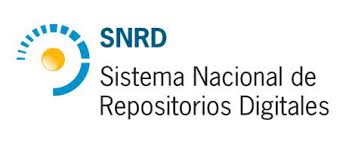Mostrar el registro sencillo del ítem
Census based selection process of areas with heterogeneous population distribution
| dc.contributor.author | Said Rücker, Patricia Beatriz Teresita | |
| dc.contributor.author | Chiapello, Jorge Alberto | |
| dc.contributor.author | Rey, Celmira Esther | |
| dc.contributor.author | Telva, Gallesio | |
| dc.date.accessioned | 2022-06-16T12:23:12Z | |
| dc.date.available | 2022-06-16T12:23:12Z | |
| dc.date.issued | 2014 | |
| dc.identifier.citation | Said Rücker, Patricia Beatriz Teresita, et al., 2014. Census based selection process of areas with heterogeneous population distribution. International Journal of Engineering Science and Innovative Technology (IJESIT). India: Bhopal: Kriti Gupta, vol. 3, no. 4, p. 441-448. ISSN 2319-5967. | es |
| dc.identifier.issn | 2319-5967 | es |
| dc.identifier.uri | http://repositorio.unne.edu.ar/handle/123456789/48449 | |
| dc.description.abstract | The work herein describes the selection process of areas aimed to study several features of the heterogeneous distributed population settled in the Iberá Natural Reserve (INR) in the Province of Corrientes, Argentina. The process was based on the information given by the last National Census of Population, Homes and Housing, considering the province departments, and their census territory subdivisions called fractions, radiuses and segments. The selection was performed by the method of Sampling by Area. The reserve area was geographically defined in the cartography regarding the boundaries established by law. The INR territory was stratified in urban area and rural area, identifying population settlements that varied in concentration. Within each of these areas the census territory subdivisions were delimited, which enabled to perform a second stratification with independent selection parameters according to the Housing Number per Census Segment. This allowed the selection at random of the segments to be studied within the urban and the rural areas, respectively. The INR was composed of 213 census segments, for the rural area 47 segments and for the urban area 15 segments were included. In order to tackle the human dimension the selection of the segments was essential to allow the approach to the inhabitants of the INR. The relevance of the census based selection process is that constitutes a model that transferred to other regions with heterogeneous population distribution enables comprehensive studies to promote the wellbeing of the population. | es |
| dc.format | application/pdf | es |
| dc.language.iso | eng | es |
| dc.publisher | Bhopal: Kriti Gupta | es |
| dc.rights | openAccess | es |
| dc.rights.uri | http://creativecommons.org/licenses/by-nc-nd/2.5/ar/ | es |
| dc.source | International Journal of Engineering Science and Innovative Technology (IJESIT), 2014, vol. 3, no. 4, p. 441-448. | es |
| dc.subject | Area | es |
| dc.subject | Inhabitants | es |
| dc.subject | Selection process | es |
| dc.subject | Territory division | es |
| dc.title | Census based selection process of areas with heterogeneous population distribution | es |
| dc.type | Artículo | es |
| unne.affiliation | Fil: Said Rücker, Patricia Beatriz Teresita. Universidad Nacional del Nordeste. Facultad de Medicina; Argentina. | es |
| unne.affiliation | Fil: Chiapello, Jorge Alberto. Universidad Nacional del Nordeste. Facultad de Medicina; Argentina. | es |
| unne.affiliation | Fil: Rey, Celmira Esther. Universidad Nacional del Nordeste. Facultad de Humanidades; Argentina. | es |
| unne.affiliation | Fil: Telva, Gallesio. Dirección de Estadísticas y Censo; Argentina. | es |
| unne.journal.pais | India | es |
| unne.journal.ciudad | Nueva Delhi | es |
Ficheros en el ítem
Este ítem aparece en la(s) siguiente(s) colección(ones)
-
Artículos de revista [296]










